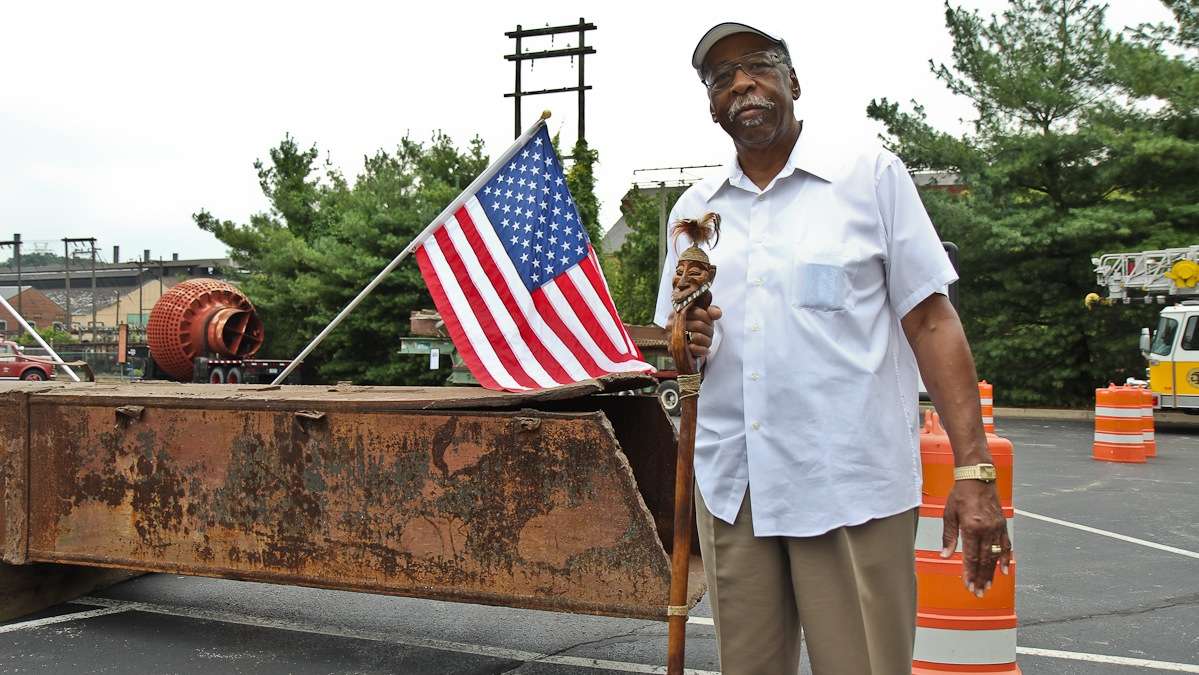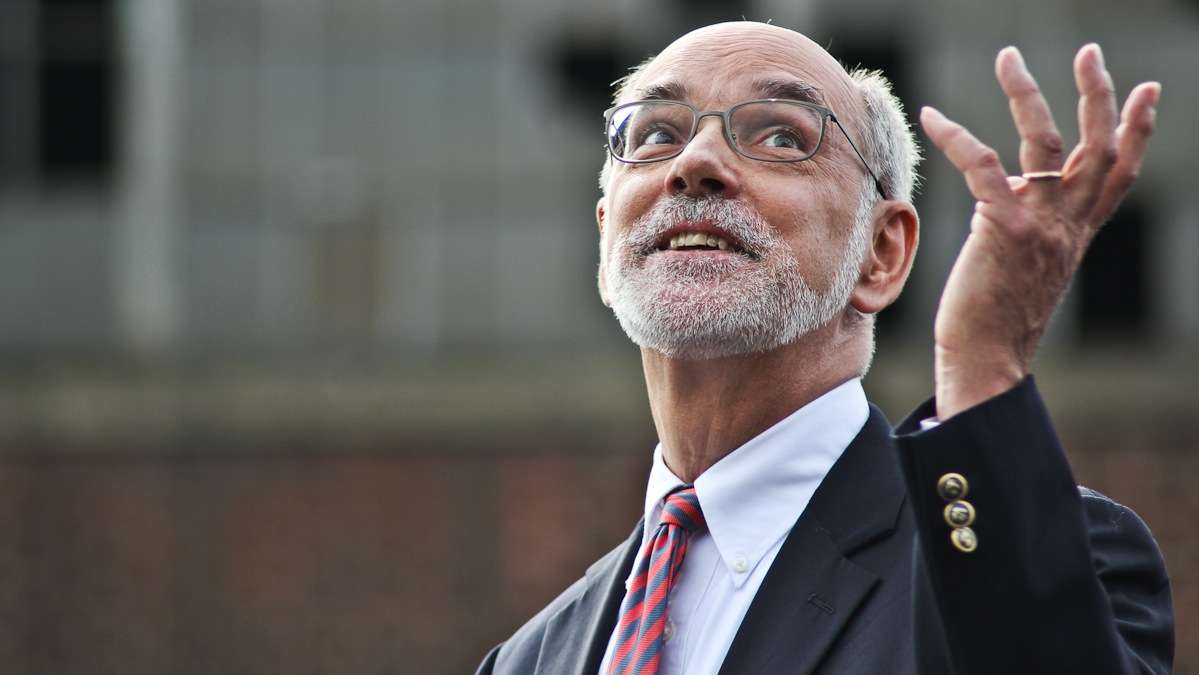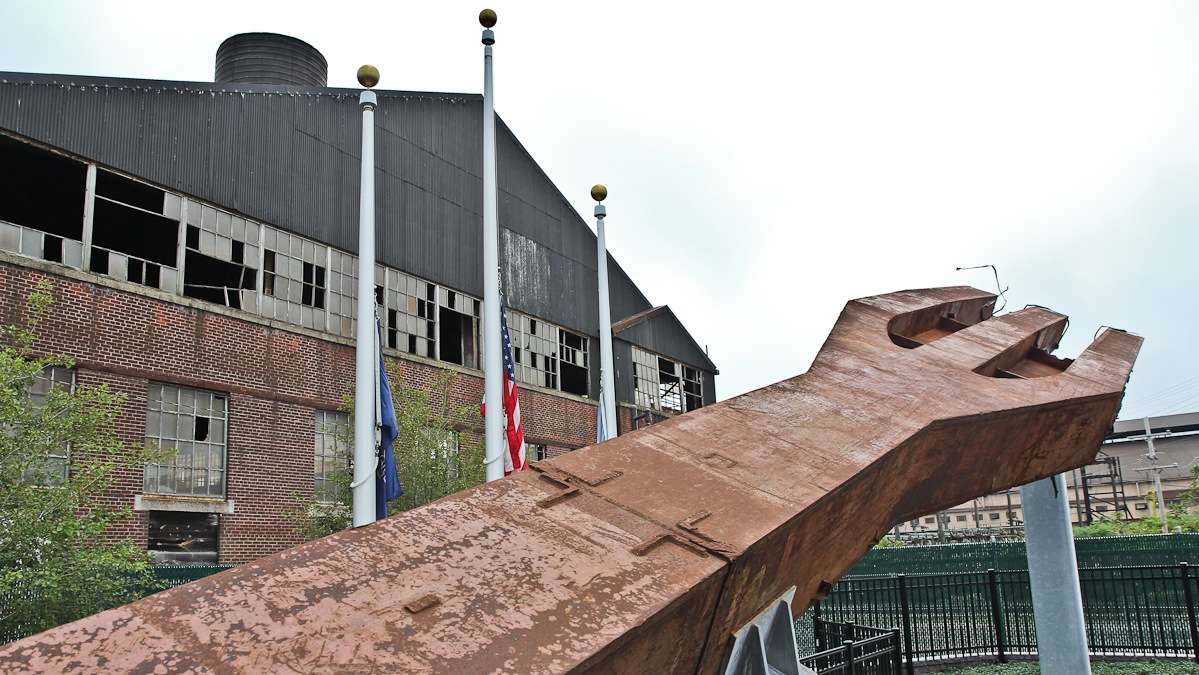For Coatesville, steel is at the core of commemorating 9/11
ListenSeveral dozen people gathered outside Lukens Steel and the National Iron & Heritage Museum in Coatesville, Pennsylvania, Thursday to commemorate 9/11.
The community has some unusual ties to the former World Trade Center, and it played host to some rather special guests.
Specifically, they weigh up to 70 tons. They’re about 100 feet long. And they look like thick, rusted forks. They’re the steel “trees” or tridents that made up the base of the World Trade Center towers, the ones that were still standing, jutting out of Ground Zero exactly 13 years ago.
And they were fabricated at the steel plant in Coatesville.
“A lot of blood and a lot of sweat went into making those trees. A lot of blood went into those trees when those towers came down,” said William Culclasure Sr., 68, who worked at the plant and helped make those steal beams back in the 1960s.
He and others didn’t actually learn their role in the Towers until after the buildings opened.
Local leaders worked with the Port Authority of New York and New Jersey to bring several of those beams back to the steel museum in Coatesville starting in 2008. They now have 10 tridents. Three of them were on display at the outdoor service.
“What you have is the northeast corner of my office building, the One World Trade Center,” explained Peter Miller, an archivist and the ceremony’s keynote speaker.
Miller spoke candidly at the service about his experience on the morning of the attacks.
“My real drive in my recovery is I wanted to understand how these three Peter Millers came to be, the one before, the one during and the one who went back to normal afterwards,” he said.
He talked about the importance of turning to fellow survivors for support and about how he’s finding meaning as a lead with the World Trade Center archive. He was involved with the transfer of the beams to Coatesville.
Those without a direct a connection to 911 may find different meanings in the steel pieces, said Scott Huston, museum president.
“These pieces, if we look back and we have 13 years to commemorate 911 and the attacks … people can connect to these pieces in their own way,” he said in his opening remarks.
The event also included music, middle school student art projects on the theme of tolerance and the reading of five names of people with Chester County connections who died on 9/11: Christopher Clarke, Michael R. Horrocks, Kevin D. Marlo, George Eric Smith, and Richard Stewart.
Afterward, Culclasure, the steelworker, said that having the “trees” on display means a lot to him and the community.
“It’s good to see the trees come back to Coatesville where they were born, but it’s a bittersweet thing just to have them back here the way they had to come back,” he said.
He hopes it will help younger generations feel a tangible connection to an important, though tragic, part of history.
WHYY is your source for fact-based, in-depth journalism and information. As a nonprofit organization, we rely on financial support from readers like you. Please give today.











